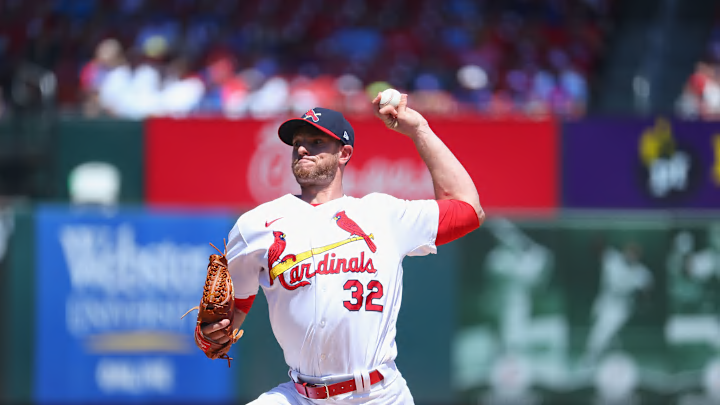6) Willson Contreras
This is probably a bit controversial. Contreras' numbers in Cardinal Red are surprisingly strong. He's been worth as much this year as Suzuki has been in both years with the Cubs. Contreras' bat has been just as strong as usual. He's been exactly what he was in Chicago, an above-average offensive catcher with question marks defensively.
He's honestly been a better defensive catcher than most people will give him credit for. Contreras' arm has taken a step back, and it has been obvious at times, especially considering the fact that he replaced the legendary Yadier Molina. But, he's been a decent enough framer, ranking in the 33rd percentile. He also has the best batted-ball profile of his career. I won't go truly into the weeds here, but Contreras is hitting the ball harder than ever, which normally translates to success offensively. He's also getting the ball into the air more than ever. He probably still has room to improve as a hitter, and he already makes a strong DH.
So why does his five-year, $87.5MM deal find its way onto this list? It's here because Contreras probably isn't what the Cardinals thought they were signing. When he signed that deal last offseason, the Cardinals likely assumed that he'd become an everyday catcher. Those plans changed quickly. Contreras was booted from his duties and pushed into a DH/OF role by early May. The Cardinals then suddenly changed their minds again, reinstalling him behind the plate and scratching the outfield plan before it began.
Willson Contreras career:
— Jacob (@CardinalsReek) August 12, 2023
.256/.349/.459/.808
118 wRC+ 3.1 fWAR/150
Willson Contreras this year:
.259/.352/.446/.800
123 wRC+ 3.2 fWAR/150
It’s a real shame because I was told this was a bad contract less than 2 months in. pic.twitter.com/psadtCY9xa
Since then, Contreras has found himself in more of a timeshare with Andrew Knizner. Prospect Iván Hererra has also featured at times and has been arguably the most impressive of the three. Through it all, Contreras has still managed to put together an outstanding offensive showing, overcoming a tough slump early in the season. He was one of MLB's best hitters in July and forces the Cards to include his bat in the lineup, even when he doesn't catch. It puts the Cardinals in a weird position. They signed a catcher to a five-year contract, yet in the first year, he's already not catching as much as they planned. He's 31 and likely to decline further on the defensive side, meaning he could quickly become a full-time DH. Many even suggested the Cardinals trade Contreras at the deadline, comparing his situation to that of Mike Leake.
That's the conflicting profile of Willson Contreras. The front office has seemed uncertain as to how to treat him this season. Their internal evaluations are impossible to discern. One thing is for certain; Contreras is being paid like a full-time catcher, and he is unlikely to be that. Hopefully, his bat remains valuable throughout his time in St. Louis, and perhaps he can enter a true timeshare with Herrera in the future, but because of the large guarantee, his positional uncertainty, and his age, Contreras finds himself sixth on this list.
